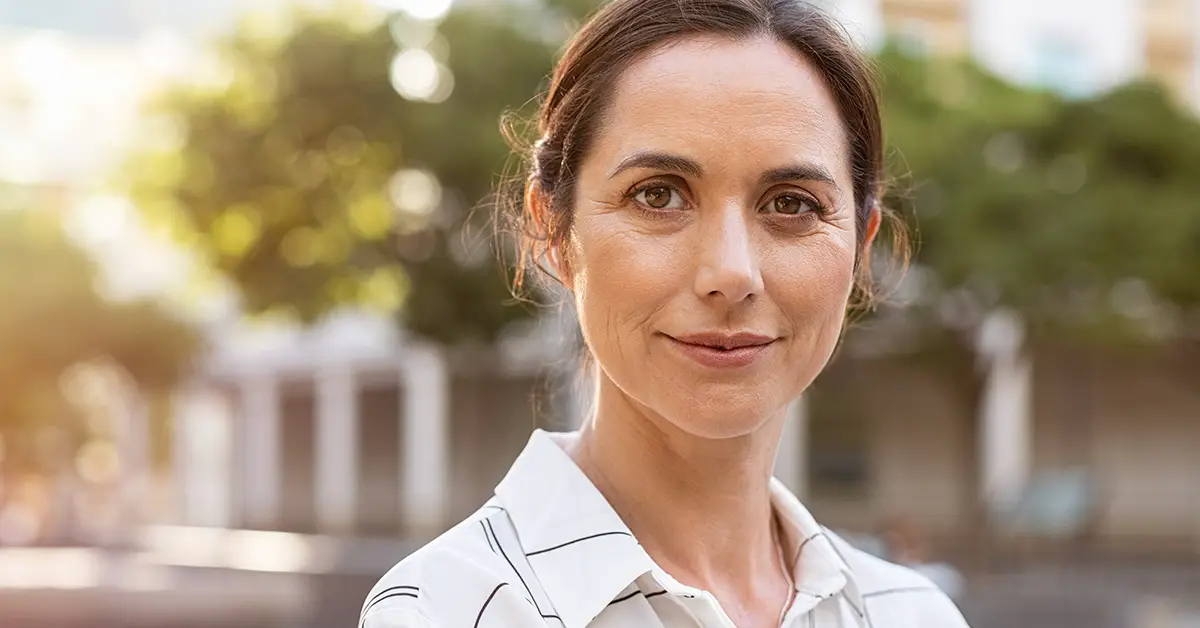Have you ever just looked at someone and thought “Ooo, they do not look well. I’m going to keep my distance from them!”? Well, turns out, this is part of human evolution and picking out sick people is something we’re somewhat good at. According to a study done in 2018, people are pretty accurate when picking out the signs of sickness in other people’s faces. (1)
Humans Can See The Signs Of Sickness In Other People’s Faces
Take a second to picture what a sick person might look like in your head. I’m not talking about someone with a terminal illness, just someone who has a common cold or other more mild illness. What do you picture? Well, according to science, humans have the ability to pick out the signs of sickness in someone else’s face quite well.

The Study
In 2018, researchers decided to study how well, if at all, we were actually able to pick out the subtle signs of sickness in ill people’s faces. The researchers brought together a group of 16 volunteers, all caucasian. They gave each of them a shot of lipopolysaccharides (LPS), which are sterile molecules taken from bacteria. This means that they are not live or infectious and will do no harm to the person. They will, however, elicit an immune response.
This immune response lasts a couple of hours and mimics someone who is “acutely sick” for just that amount of time. The volunteers weren’t actually sick, they just appeared that way and felt that way for a couple of hours. On a separate occasion, each participant received a placebo injection. The researchers took their photos after each injection and then presented the photos to a different group of 60 people side by side.
The observers correctly guessed which were the sick photos 13 out of 16 times, or 81% accuracy. The researchers were careful to make sure that no overt symptoms were on display. In both photos, the participants had neutral faces.
Read: A Month Before A Heart Attack, Your Body Could Be Warn You With These 9 Signals
What Were The Signs Of Sickness That The Raters Picked Up On?
The participants who decided in which photo the person was sick and in which they weren’t all picked out similar characteristics in each one. The visual cues displayed on “sick” participants’ faces included:
- Paler lips and skin
- Swollen face
- Droopier corners of the mouth
- More droopy eyelids
- Redder eyes
- Duller, patchier skin
- Appeared more tired
“humans have the ability to detect signs of illness in an early phase after exposure to infectious stimuli,” the authors wrote in the study.
What Does This Mean?
First of all, it shows how evolutionarily humans have developed the ability to detect infectious illness in others, even if it is only mild. This has acted as a sort of self-protection mechanism. If we can look at someone’s face and tell simply by their eyes, mouth, and skin that they have an illness we don’t want to catch, we know to stay far away from them.
“This study adds to growing evidence for the existence of facial cues associated with acute sickness and help us understand how, unfortunately, social stigmas about people suffering illnesses might emerge,” said Professor Ben Jones of the Face Research Lab at the University of Glasgow. (2)
The applications for this, however, go beyond basic self-protection while we go about our daily lives. The researchers say that this could also help doctors and computer software better detect sick people. Many recognize that this is the first study that shows that illness is detectable shortly after onset. This could be a potentially very valuable tool when combating disease outbreaks. (3)
“Being able to quickly identify and avoid potentially sick, contagious individuals will certainly be an evolutionary advantage and this study is a good starting point for further research into the how we detect early signs of infection,” said Dr. Rachel McMullan of the Open University.
More Research Required
Of course, this was a small study done on only one subset of the population – healthy white people. It also doesn’t replicate real life where there are variations in a person’s facial appearance from day to day. These differences aren’t necessarily always caused by illness.
The researchers are well aware that bigger, more diverse studies need to be done in order to determine just how far this protective mechanism goes and how useful it can be. That being said, take this as a sign that if you think someone looks sick, there is a pretty good chance that you are right. It is likely in your best interest to keep your distance from that person, just in case. After all, while sharing is caring, in this case, not so much.
Keep Reading: Exactly what happens to our bodies when we die – step-by-step process from death
Sources:
- “Identification of acutely sick people and facial cues of sickness” The Royal Society of Publishing. January, 3, 2018
- “Humans can spot small signs of sickness at a glance, research suggests” The Guardian. January 3, 2018.
- “That’s sick! Humans identify infected peers from a photo.” Medical Xpress . Januray 3, 2018 2018

